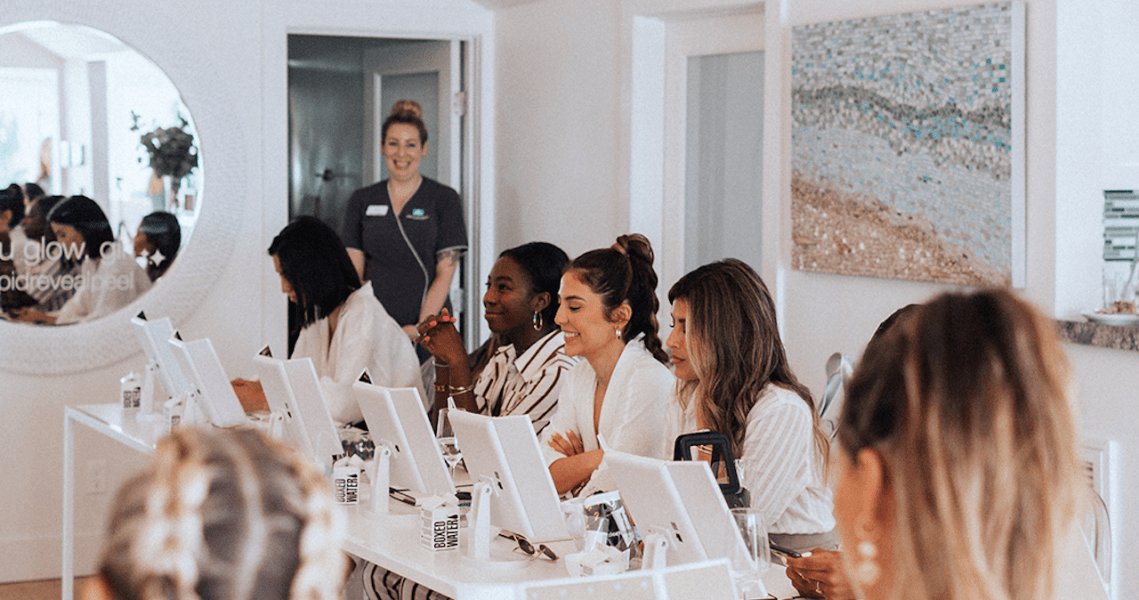Dermalogica, the skin-care brand and professional training school, is bringing its in-person education efforts online with a new artificial intelligence-powered digital skin analysis tool.
The online tool, called Face Mapping, lives on its own landing page called FaceMapping.me and is also embedded on Dermalogica.com. Visitors to the Face Mapping site are prompted to take a selfie with their mobile phone or desktop camera that is then evaluated based on seven skin-care concerns, like breakouts, redness and wrinkles. For each skin issue, a product is suggested, and shoppers are then redirected to the Dermalogica e-commerce site where they can live-chat with a brand aesthetician and complete their purchase. The Face Mapping feature is meant to mimic the in-person consultations that customers receive when they visit Dermalogica-trained aestheticians, who are available at the brand’s 37 global flagship stores, at several thousand boutique spas nationwide and at Dermalogica facial service bars within all Ulta locations.
The digital tool is a continuation of Dermalogica’s attempts to reach consumers less familiar with the brand, similar to its recent, first-ever pop-up in March. It is also meant to provide easier access to new shoppers who either do not have access to in-person consultations or are discovering Dermalogica outside of normal business hours. Dermalogica sales are balanced between age groups spanning teenagers to 50-somethings, said Lauren Consiglio, Dermalogica’s vp of U.S. marketing and global programs.
“When someone is on their mobile phone browsing the web at 2 a.m., it’s a different context and mindset,” said Dermalogica’s director of digital disruption, Frank Freeman. “If we don’t have someone in-person, we need to find a different way to drive human touch.” He expects the brand’s site to have 1 million global unique visitors by the end of 2019. According to web traffic analysis tool SimilarWeb, Dermalogica’s U.S. website had over 280,000 visits between October 2018 and March 2019.
“It’s our way of bringing personalized advice from trusted skin therapists into the hands of literally anyone,” said Aurelian Lis, Dermalogica’s global CEO.
Dermalogica, which was founded in 1986, was acquired by Unilever in 2015. The brand declined to provide sales figures but shared that in 2018, its U.S. division grew by 11%. The brand is sold in 106 markets and trains over 100,000 aestheticians each year.
Digitally native AI tools have become popular among beauty brands, and span categories from skin care to makeup and hair. Olay’s online Olay Skin Advisor matches users to suggested products based on needs, as does skin-care brand Vichy’s Skin Diagnostic and L’Oréal Paris’s Skincare Consultation. Skin-care startup Proven uses its online AI tool to create personalized formulas for its skin quiz participants.
Ad position: web_incontent_pos1
Dermalogica is currently driving prospective shoppers to FaceMapping.me through search engine optimization and plans to launch a dedicated social media campaign in the second half of the year — the brand has 275,000 Instagram followers and 228,000 likes on Facebook. The website language is also simple in explaining its purpose — to help users find products — so as to not “overpromise” the AI’s capabilities of providing more information, said Freeman.
Users can also find the tool on Dermalogica.com by clicking on “Face Mapping” within the “Your Skin” dropdown menu. As the website becomes part of a social marketing campaign later this year, the call-to-action placement for purchase and some language is likely to change, said Freeman. However, the end goal will still be to prompt customers to discuss their results with a therapist on live chat, versus self-prescribe products they may not need.
“[Face Mapping] has been designed to create a ‘wow’ moment for the brand and provide an interesting talking point,” said Freeman. “We [plan to] use this to capture attention and drive dialogue to funnel a person into a conversation with a therapist. We see it as an opportunity to reach new audiences. There are people out there who haven’t heard of us, and we see this as a great way to meet them.”




